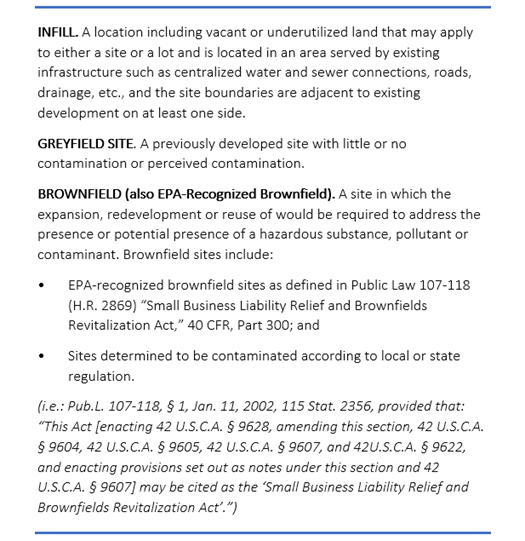Damiyen Wilkerson
December 16, 2022
Deep Dive into Chapter 5: Lot Design, Preparation, And Development
Constructing a green building is a process that should begin well before the foundation is poured and settled. Chapter 5 of the ICC 700-2020 National Green Building Standard® (NGBS) awards and acknowledges the careful selection, design, preparation, and development of a lot intended to be the site of a certified green building.
Unlike NGBS Chapter 4 Site Development, which addresses the entire development site, Chapter 5 compliance is included within the New Construction Scoring Path, and its practices contribute directly to the building’s certification. However, there is interplay between these two similar chapters. When a building seeking certification is constructed within a certified Land Development, the building is eligible to earn 15 points toward Chapter 5 compliance.
Chapter 5 includes many practices designed to improve resident and community health and wellbeing, incentivizing community gardens, walkability, bike lanes, on-site exercise, smoking prohibition, etc. These items contribute points toward Chapter 5 compliance, and many also contribute toward a project earning the +WELLNESS certification.
Still need more? For projects considering installing EV chargers, what is better motivation than earning points in Chapter 5 and Chapter 7 for the charging equipment on top of the Inflation Reduction Act (IRA) incentives?
Chapter 5 is also more than just a design standard, with practices organized into three clear and easy-to-apply sections for lot selection, design, and construction. Right off the bat, 501 Lot Selection awards projects that capitalize on existing infrastructure and modes of transportation that reduce the environmental impact of the lot. While there are numerous practices that address the surrounding community’s resources and density, the chapter requirements are accessible to rural, suburban, and urban locations. 502 Project Team, Mission Statement, and Goals awards well-assembled teams with clear roles and knowledgeable members. 503 Lot Design focuses on eliminating or mitigating environmental impacts from natural resources and sensitive environments all the way to slope disturbance and proper demolition. 504 Lot Construction expands on 503, targeting items such as on-site supervision, proper fencing around the lot, and soil and erosion control implementation. The chapter concludes with innovative practices focused on maximizing the capability of the lot. Practices such as minimizing the parking and driving areas and maximizing the population density ensure space is effectively managed. This blog will focus on the common practices and the few mistakes that NGBS Green Reviewers typically finds when reviewing verification reports uploaded by NGBS Green Verifiers.
NGBS Green Staff are happy to report that practice 501.1 Lot is commonly used as capitalizing on existing infrastructure greatly reduces the environmental impact of construction. From infills to EPA-recognized brownfields, all are great from a preservation standpoint. One mistake of old that verifiers made was selecting points for a lot being both a greyfield and an EPA-recognized brownfield lot. Per the 2020 NGBS, this duality is not possible (see fig. 1). The NGBS Green Scoring Tool presents an error message when both are selected.

Figure 1. 2020 NGBS Lot Definitions
Another commonly selected practice is 503.5 Landscape Plan. While the practice reads, “a plan for the lot is developed to limit water and energy use while preserving or enhancing the natural environment,” points should not be awarded until the plan is implemented. Most projects do not satisfy this practice until the final inspection, but if the plan is already in effect and not visible by photo review, Verifiers should always leave a note confirming the item was met.
504.3 Soil disturbance and Erosion Implementation is another practice that gets awarded erroneously. The subitems for this practice are reviewed by NGBS Green Staff via photo submission. While NGBS Green Reviewers are happy to hear and see developers and builders marking out limits of clearings and grading etc. on the lot, effective and enduring implementation is imperative. Occasionally, photos reveal missing or damaged sections of silt fences and other protective measures that put the intent of the practice, and the protection of the environment, at risk. Projects are recognized and awarded based on successful implementation only, and Verifiers should be sure to discuss concerns with on-site supervisors if measures are in question well before the inspection is complete.
It is amazing to see the importance builders and developers place on lot design on the path to green building, and the NGBS Green Reviewers look forward to seeing the relevance and successful implementation continue to grow!
Back to Top